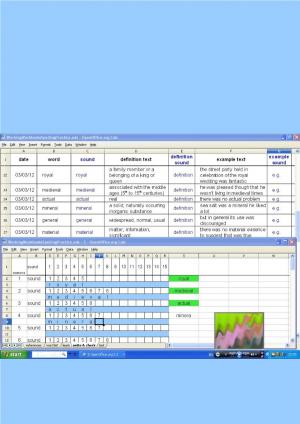HTML5 canvas in real time
Nonfiction, Computers, Application Software, Computer Graphics, General Computing, Skills| Author: | Antonio Taccetti | ISBN: | 9788826044040 |
| Publisher: | Antonio Taccetti | Publication: | March 29, 2017 |
| Imprint: | Language: | English |
| Author: | Antonio Taccetti |
| ISBN: | 9788826044040 |
| Publisher: | Antonio Taccetti |
| Publication: | March 29, 2017 |
| Imprint: | |
| Language: | English |
This e-book is an interactive e-book this means that the user can enter datas in the pages and content of these will conform to the new values.
To enter these datas, in the pages of the e-book, have been implemented controls similar to those that can be found on the Internet pages and also an executing button to impart the command to adapt the content of the page to the new values.
The subject of the e-book is the Compose HTML5 Canvas, that for its characteristics well suits to be documented with this method.
The tag canvas is one of the novelties of HTML5,it is a container that can be used to draw and to work with graphic elements.
Formally canvas is a HTML container defined by the usual opening and closing tags.
The reasons for which it is useful to use canvas are numerous:
- Interactivity:Canvas interacts with users
- Animation:Each drawing can be animated, from the bouncy balls to games, till the kinematics
- Flexibility: To Create Lines, complex shapes, texts, images, including audio/video
- Standard Web: Free and gratuitous use of Open technology, valid throughout the world
- Browser:Canvas is supported by all major browsers for desktop and mobile devices
- Popularity:wide availability of resources, libraries and tools in support of the Developers
Canvas can be used for:
- Creating games in 2D and 3D
- Excellent substitute of Flash for banners and ads
- generation of eye-catching graphics both static as well as interactive
- with images and audio/video to produce effective experiences of learning
- Art and decoration with colors, nuances, transparencies and shadows
To exhibit its potential, the canvas, requires a language support such as JavaScript, and it is this language that also gives interactivity to the pages of this e-book.
This guide explores the All Controls javascript for canvas by providing the essential knowledge to the use of each of them.
For each command are showed one or more interactive examples.
This e-book, thanks to the interactivity will allow to a better appreciation of the real potentiality of the various controls and the interaction among them.
In order to be able to consult this e-book is necessary an epub reader3 of last generation (autumn 2016).
Due to scarce availability, (autumn 2016) of e-book evolved readers capable of supporting the full interactivity, we give here below non-exhaustive list of advanced readers for various operating systems.
- Windows:Macintosh and Linux: AZARDI Infogrid Pacific
- Android:bookari (premium version)
- iPad:Ebook Reader
- Chrome browser:readium (extension)
Of course other readers may be able to support the reading of interactive3 ePub
This e-book is an interactive e-book this means that the user can enter datas in the pages and content of these will conform to the new values.
To enter these datas, in the pages of the e-book, have been implemented controls similar to those that can be found on the Internet pages and also an executing button to impart the command to adapt the content of the page to the new values.
The subject of the e-book is the Compose HTML5 Canvas, that for its characteristics well suits to be documented with this method.
The tag canvas is one of the novelties of HTML5,it is a container that can be used to draw and to work with graphic elements.
Formally canvas is a HTML container defined by the usual opening and closing tags.
The reasons for which it is useful to use canvas are numerous:
- Interactivity:Canvas interacts with users
- Animation:Each drawing can be animated, from the bouncy balls to games, till the kinematics
- Flexibility: To Create Lines, complex shapes, texts, images, including audio/video
- Standard Web: Free and gratuitous use of Open technology, valid throughout the world
- Browser:Canvas is supported by all major browsers for desktop and mobile devices
- Popularity:wide availability of resources, libraries and tools in support of the Developers
Canvas can be used for:
- Creating games in 2D and 3D
- Excellent substitute of Flash for banners and ads
- generation of eye-catching graphics both static as well as interactive
- with images and audio/video to produce effective experiences of learning
- Art and decoration with colors, nuances, transparencies and shadows
To exhibit its potential, the canvas, requires a language support such as JavaScript, and it is this language that also gives interactivity to the pages of this e-book.
This guide explores the All Controls javascript for canvas by providing the essential knowledge to the use of each of them.
For each command are showed one or more interactive examples.
This e-book, thanks to the interactivity will allow to a better appreciation of the real potentiality of the various controls and the interaction among them.
In order to be able to consult this e-book is necessary an epub reader3 of last generation (autumn 2016).
Due to scarce availability, (autumn 2016) of e-book evolved readers capable of supporting the full interactivity, we give here below non-exhaustive list of advanced readers for various operating systems.
- Windows:Macintosh and Linux: AZARDI Infogrid Pacific
- Android:bookari (premium version)
- iPad:Ebook Reader
- Chrome browser:readium (extension)
Of course other readers may be able to support the reading of interactive3 ePub















